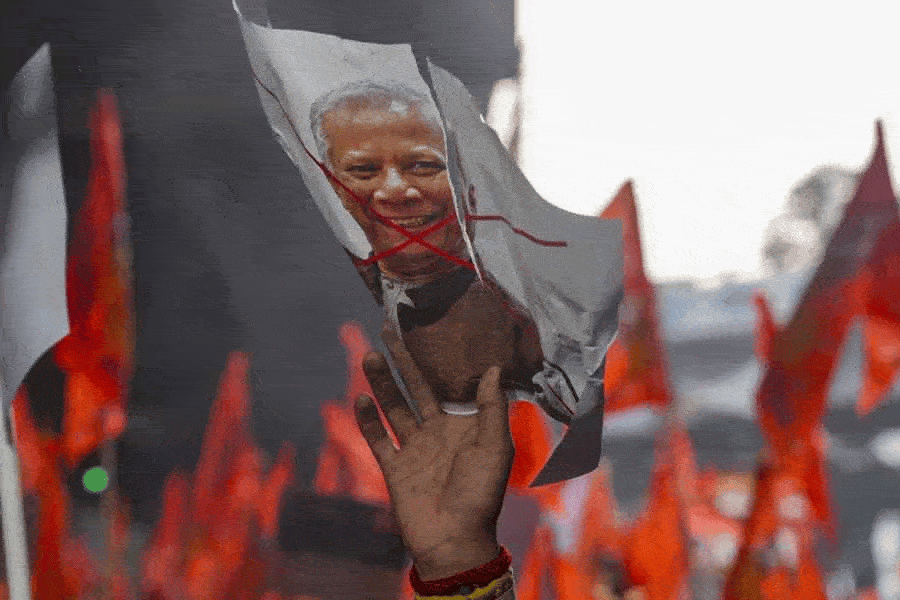|
|
Saumi Nandy claims to “disconnect” from her surroundings, from society, and even from her “formal self” through her art. Her canvases, displayed in the exhibition, Image within Image: A Psychic Journey (Academy of Fine Arts, October 21-27), reflect a contradiction between melancholy and celebration, as also between aloofness and involvement.
She has been both flamboyant and hesitant in her approach. Her strokes are bold and direct, but she shies away from reaching an aesthetic crescendo in most of her paintings. What is lacking is not skill but an absolute surrender to passion. This could have rendered subtlety to her art had she not chosen gestural abstraction as her style.
Gestural abstraction, also known as “action painting”, demands of the artist a great level of spontaneity, a kind of fanatic ardour. The philosophy behind this genre comprises the attempt to achieve direct access to the artist’s subconscious; the works of painters such as Franz Kline dwell on the physical act of painting — the impulsive madness of the brush.
Nandy’s work shows the strong influence of an Indian action painter, Hiran Mitra, whom she calls her “mentor”. Her technique — consisting of the extensive use of base colours, experiment with textures, the interplay of shades and the use of strong contrasts — derives directly from Mitra’s works. She seems to have tried her best to deviate from her mentor’s style and create a distinct visual identity, but her efforts are yet to mature fully. On the other hand, her strokes lack the audacious and explosive confidence of Mitra’s brush, and her visions fall short of the profundity he has achieved.
Her paintings, Nascent and Mosaic of Life, present a surprising use of textures. In Nascent, textures derived from packing plastic and cloth seals have broken the white surface of the canvas, with vibrant red splashed on them, while Mosaic of Life assembles a host of colours and watches them eat into one another. However, some of the paintings, such as An Actor Prepares, Kieslowski A,B,C and Red as a Memory, Green as Future, are rather obvious and ordinary. Two of Nandy’s canvases outshine the rest — Scorpion and Sparks from the Other Ages. In these two, Nandy seems to have got the better of her dithering mind to a certain extent. The other work that may amuse the viewer, mostly because of its title, is Zindagi Na Milegi Dobara. The use of the name of a Bollywood film as the title of a non-figurative painting is somewhat refreshing, even ironic.
Nandy’s canvases convey a palpable struggle of two conflicting tendencies: one that urges her to hold back and another that urges her to let go. This dilemma can either help her mature as an artist or restrain her creative impulses. Her art seems to have reached a potent turning point.












